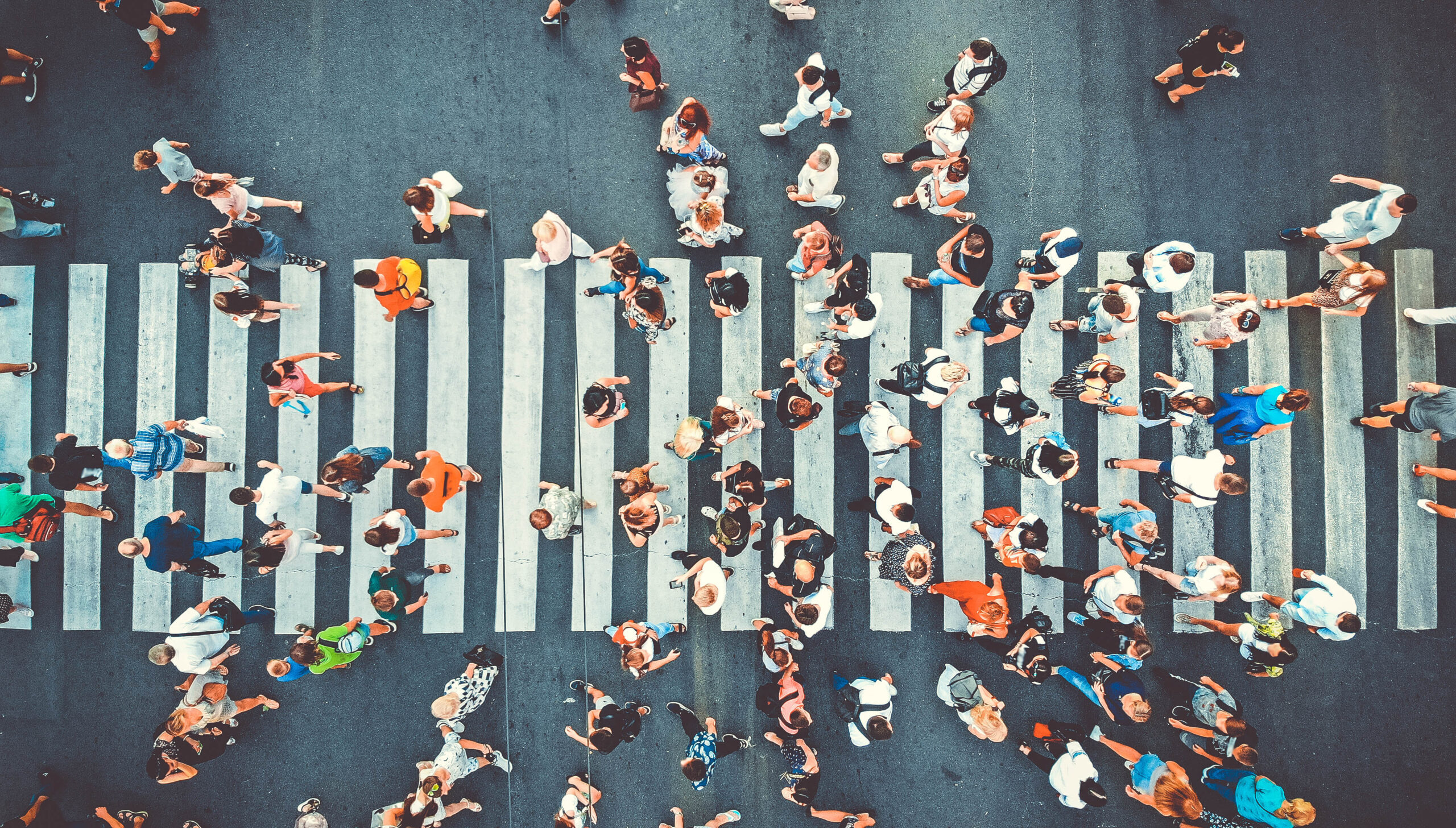Every step you take
With advanced computer vision models and live public street cam video, a University of Michigan startup is tracking social distancing behaviors in real time at some of the most visited places in the world.
Voxel51’s new tool shows — quite literally — an uptick in public gathering in Dublin on St. Patrick’s Day, for example, and at New Jersey’s Seaside Heights boardwalk during a recent weekend of unusually good weather.
The tool uses the company’s existing platform and underlying custom AI to continuously track vehicle, cyclist and pedestrian traffic at seven locations: New York’s Times Square; Abbey Road in London; Fremont Street in downtown Las Vegas; Seaside Heights in New Jersey; a beach in Ft. Lauderdale and intersections in Dublin and Prague. Several other locations are in beta, and more will be added soon.
It assigns each place a “physical distancing index,” or PDI score, once every 15 minutes.
Every move you make
Today, the researchers added information on case rates and death rates. They are in the process of adding additional curves to their graphs, such as weather.
“This pandemic is having an unprecedented impact on our daily lives and what we’re trying to do is create a tool to improve public awareness,” says Jason Corso, U-M professor of electrical and computer engineering and CEO of Voxel51, an Ann Arbor video analytics and data management company.
“The PDI score helps people understand and compare how the coronavirus is changing social behaviors over time and enables municipalities to visualize how they’re doing from a public health perspective. Even though the virus is spreading, overall, we can see that the public response to the stay-at-home mandates has been rather dramatic and impressive.”
While other projects are also tracking lockdown compliance, what’s different about Voxel51’s approach is that it’s real-time, video-based and protects privacy. Data sources like mobile phones don’t protect privacy and only offer approximate locations.
On this new platform, viewers can click on a specific point in time on an individual city graph to see historic footage as well as additional details about policies such as school closures and stay-at-home orders.
The graphs provide insights into the difficulty in limiting human activity in the face of good weather and special celebrations: Fort Lauderdale is one of the top destinations for students on spring break. As shown on the detailed graph for Florida, despite the governor issuing a public emergency Feb. 29, crowds were at all-time highs in early March, yet started to fall dramatically after the mayor closed bars and nightclubs March 17. And New York City —hit hardest by the pandemic — has a tough time keeping its 8 million tightly packed residents completely shuttered in.
I’ll be watching you
Voxel51 plans to add new locations regularly, as well as blog posts analyzing the data. The company is also accepting requests to add locations or specific installations of the system for local government and taxpayer usage. Views of different parks could help residents locate the least trafficked area to safely walk their dog, for example.
The new curves, including those on case rates and death rates, could be illuminating as the pandemic continues.
“We expect to find rich information in the joint analysis of the physical distancing index and these other feeds,” Corso says. “There is even a chance that the PDI can feed into a predictive model for cities not yet greatly affected and the potential for a renewed outbreak next year.”




Jane Fitzgerald - 1970
The public has accepted hidden camera footage for business security purposes and street views for weather and emergencies. Yet this technology, however well-intentioned, could foment micro-management of any human activity. Your teaser text, ” Or a little creepy?” rings true for me.
Reply
Jil Gordon - 1974
“Or a little creepy?” How about sinister and criminal.
Tracking social distancing behaviors (Spying on every move you make)
Underlying custom AI to continuously track (Hidden and lurking)
Improve public awareness (Fear and indoctrination)
Tracking lockdown compliance (To see who obeys the master or not)
Protects privacy (And exactly who believes this?)
Reply
Philip Stahl - 1972/1983
Re: Every Move you Make – I’m concerned how this might put domestic violence victims at risk if someone were to watch these videos
Reply
Tim Yagle - 1980
Clever use of the Police’s relevant for the subheads, but Philip makes a good point. And they track us, but at what expense? Google isn’t all the benevolent with this effort. There is something in it for them, too,
Reply
S Raymond - 1984
While I completely and totally support social distancing to prevent COVID transmission, this level of monitoring is insidious movement toward complete invasion of privacy. I don’t buy that “Views of different parks could help residents locate the least trafficked area to safely walk their dog, for example”. I am pretty aware of where I can and cannot walk my dog. I don’t think it’s a stretch to think that it could also be used to suppress free speech demonstrations, now or in the future. Hello, China.
Reply
Tim Yagle - 1980
Upon reading this and comments again, I disagree with Jane’s assertion that the public has ‘accepted’ hidden camera footage for business security purposes and street views. People might tolerate it because the cops/law enforcement will use those whether we like it or not, but accepting it implies that we tacitly approve it. Not so.
Also, who exactly does this new technology help? Certainly not the general public being scrutinized without their approval for something as vague as analyzing data about their location for, well, what? Social distancing works, but the public can’t be expected to follow such orders even if they are mandatory. They have to be enforced, too, which they are not everywhere.
Big Brother rises again.
Reply